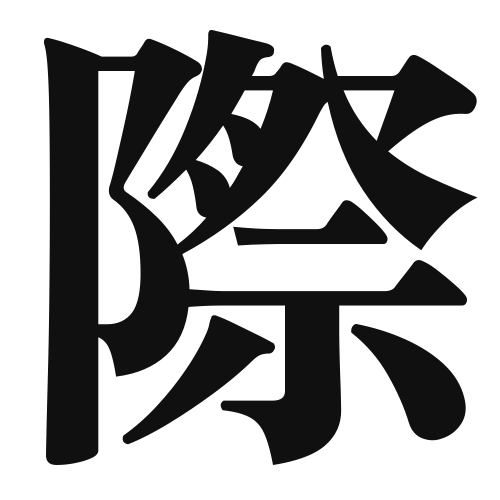1. Overview of Meaning
The kanji “際” (sai) generally means “occasion,” “time,” or “border.” It refers to a specific point in time or a boundary between two things.
2. Formation and Radical
Formation of the Kanji: The kanji “際” is a compound character (会意文字) that combines elements to convey its meaning. It consists of the radical “水” (water) and “斉” (to be equal), suggesting a meeting point or boundary.
Radical: The radical of “際” is “水,” which often relates to water or fluidity, emphasizing the idea of boundaries or edges, much like the shore of a river.
3. Examples of Usage
Common Words and Phrases: Some frequently used words that include “際” are:
- 際限 (saigen) – limit, boundary
- 際立つ (sai-datsu) – to stand out
Example Sentences in Daily Conversation:
- この際、もう一度考えてみてください。 (In this occasion, please think about it again.)
- 彼との際は特別なものでした。 (The time with him was special.)
4. Synonyms and Antonyms
Similar Kanji: A similar kanji is “境” (kyou), which means “boundary” or “border.” While both refer to limits, “際” often emphasizes the time aspect, whereas “境” focuses more on physical boundaries.
Antonyms: An antonym for “際” could be “無限” (mugen), meaning “infinity” or “limitless,” which contrasts with the idea of a defined occasion or boundary.
5. Cultural and Historical Background
Relation to Japanese Culture: The concept of “際” is significant in Japanese culture, where timing and occasions are often emphasized in social interactions and traditions.
Proverbs and Idioms: One common saying is “際のない話” (sai no nai hanashi), which means “a story without limits,” indicating a conversation that goes on without a clear boundary or end.
